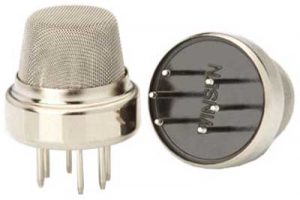Deep Draw Stamping for Sensor Housings: Precision Engineering for Demanding Applications
In the world of advanced electronics and IoT, sensor housings play a pivotal role in protecting sensitive components from environmental hazards while ensuring reliable performance. As sensors evolve to operate in harsher conditions and tighter spaces, manufacturers increasingly turn to deep draw stamping for sensor components—a process that delivers unmatched precision, durability, and design flexibility. Discover how deep draw stamping for sensor housings (deep drawn sensor shells) are setting new benchmarks in industries from automotive to medical technology.
Why Deep Draw Stamping for Sensor Housings?
Deep draw stamping is a metal forming technique that transforms flat metal sheets into seamless, hollow shapes with high depth-to-diameter ratios. For sensor housing precision deep draw, this method excels in creating complex geometries with tight tolerances (±0.05mm or finer). Key advantages include:
- Superior Sealing
Deep drawn sensor tubes and shells provide hermetic seals, critical for sensors exposed to moisture, dust, or chemicals.
- Material Efficiency
Minimizes waste by shaping metal in a single continuous process.
- High Strength
Cold-working metals like stainless steel or aluminum enhance structural integrity without compromising weight.
- Cost-Effective Mass Production
Ideal for high-volume orders with consistent quality.
Applications of Deep Drawn Sensor Components
From automotive LiDAR to medical implantables, deep draw housing solutions are indispensable:
- Automotive Sensors: Deep drawn sensor shells protect tire pressure monitors, exhaust gas sensors, and ADAS components from vibration and extreme temperatures.
- Medical Devices: Hermetic housings for implantable glucose monitors or endoscopic tools, ensuring biocompatibility and sterilization compliance.
- Industrial IoT: Ruggedized housings for factory automation sensors, resistant to corrosion and mechanical stress.
- Consumer Electronics: Compact, lightweight deep drawn sensor tubes for smartphone ambient light sensors or smart home devices.
Key Features of Precision Deep Draw Sensor Housings
Leading manufacturers of deep drawing sensor housings focus on the following:
- Material Versatility: Compatibility with stainless steel, copper alloys, titanium, and specialized coatings (e.g., nickel plating).
- Custom Tooling: Tailored dies to produce micro-sized housings or intricate features like flanges, threads, or internal grooves.
- Surface Finish Control: Smooth interiors to prevent signal interference in sensitive electronic components.
- Scalability: Rapid prototyping to full-scale production with zero defect targets.
Choosing the Right Deep Draw Stamping Partner
Not all metal stamping companies specialize in sensor housing precision deep draw. When selecting a supplier, prioritize:
- Technical Expertise: Proven experience in micro-deep drawing and ultra-thin metal forming (e.g., foils as thin as 0.1mm).
- Quality Certifications: ISO 9001, IATF 16949, or ISO 13485 compliance for regulated industries.
- Advanced Equipment: High-speed hydraulic presses, CNC-controlled tooling, and laser measurement systems.
- End-to-End Solutions: Secondary services like plating, welding, or assembly to streamline supply chains.
The Future of Sensor Housing Manufacturing
As sensors shrink and smart technologies demand higher reliability, deep draw stamping for sensor components will evolve with innovations such as:
- AI-Driven Process Optimization: Real-time adjustments to reduce material stress and improve yield rates.
- Hybrid Materials: Combining metals with polymers for lightweight, multifunctional housings.
- Sustainability: Recyclable alloys and energy-efficient stamping processes to meet eco-friendly goals.
Conclusion
Deep drawn sensor shells and deep drawn sensor tubes are more than protective casings—they are engineered solutions that ensure accuracy, longevity, and performance in critical applications. By partnering with a deep draw stamping expert, industries can achieve seamless integration of sensors into next-gen technologies, from autonomous vehicles to life-saving medical devices.

